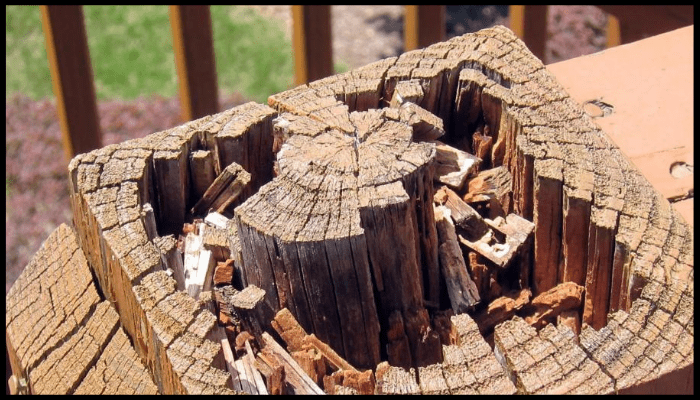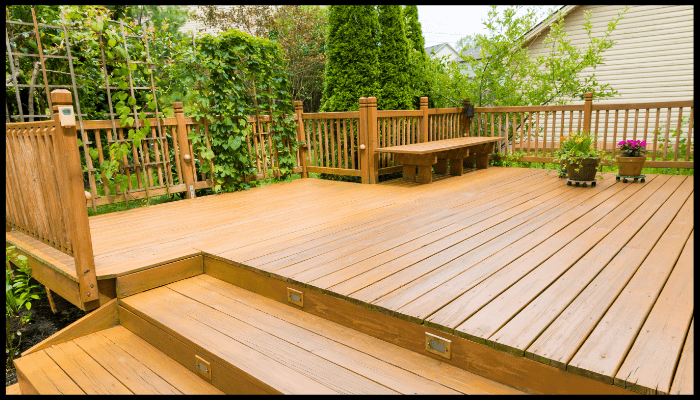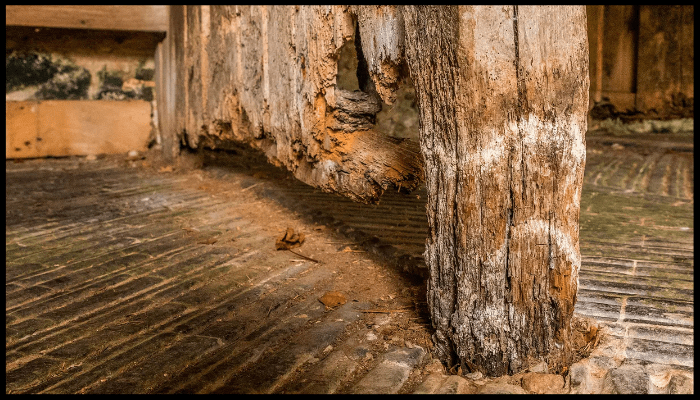How to Prevent Rot and Decay in Treated Pine
How to Prevent Rot and Decay in Treated Pine
Table of Contents:
- Understanding Rot in Treated Pine
- Best Practices to Prevent Rot and Decay in Treated Pine
- Maintenance and Wet Rot Treatment
- Recommended Products and Local Canberra Specialists
- Environmental Factors Affecting Pine Rot in Canberra
- Frequently Asked Question
Treated pine is one of the most versatile and affordable timber options for outdoor construction in Canberra.
Explore our treated pine products to find the right materials for your project.
It’s commonly used for everything from decking to fencing, thanks to its durability and ease of use.
But there’s a catch - without proper care and treatment, it can become vulnerable to wood rot and decay, especially in Canberra’s varied climate.
Understanding how moisture, weather conditions, and poor ventilation affect treated pine is key to ensuring long-lasting performance.
With the right prevention measures, you can protect your timber from early damage and avoid unnecessary repair or replacement costs.
Understanding Rot in Treated Pine
Types of Rot Affecting Timber
Timber decay is often caused by two major culprits: wet rot and dry rot.
Wet rot develops when timber is exposed to persistent moisture, softening the wood and weakening its structure over time, often caused by wet rot fungus.
The most common form, brown rot, darkens the timber and causes it to crack and break down.
Dry rot, on the other hand, is more aggressive.
It doesn’t need much moisture to spread and can affect large sections of structural timber before being noticed.
If left untreated, it can seriously compromise the safety and longevity of decks, pergolas, and other timber structures.
Importance of Structural Integrity in Pine Timber
The strength and reliability of your pine timber are essential for any outdoor project. However, moisture can quietly undermine that strength over time.
When water builds up inside the timber, it weakens the structure and increases the risk of decay or even collapse.
Regular inspections help identify early signs of moisture damage or rot before they become serious issues.
They allow you to take action early, protecting the safety of your structure and avoiding costly repairs. Think of it as routine maintenance to ensure your timber continues to perform as it should, without surprises.
Best Practices to Prevent Rot and Decay in Treated Pine
Avoid Direct Contact and Standing Water
Soil and standing water are major contributors to timber decay. When treated pine is in direct contact with damp ground, it can remain saturated for extended periods, increasing the risk of rot and fungal growth due to excess moisture .
To prevent this, timber should always be elevated and supported by rot-resistant materials.
Use gravel or concrete footings to allow water to drain away efficiently.
Our fencing materials are designed to withstand moisture and provide long-lasting durability."
These foundations create a protective barrier that keeps timber dry and stable, extending its lifespan and reducing long-term maintenance issues.
Subsection: Ensuring Proper Ventilation
Adequate airflow is essential for preventing moisture buildup around timber structures to help prevent wood rot .
Without it, damp conditions can persist after rain, increasing the risk of decay.
This is especially important in Canberra’s climate, where wet periods can be followed by long dry spells.
When building decks, fences, or outdoor structures, leave consistent gaps between boards and keep supports free from debris or plant growth.
Our decking and screening supplies offer a variety of options to suit your needs.
Proper ventilation helps timber dry quickly, reducing the conditions that allow fungi and rot to develop.
Handling and Treating Timber Correctly
Chemical treatments like alkaline copper quat (ACQ) or copper azole are important for protecting timber against moisture and decay.
However, any cuts or drilled areas made during construction expose untreated timber, which weakens its resistance.
Always apply appropriate timber preservatives to exposed ends and joints. Reapplying treatments regularly ensures the timber remains protected over time.
It’s a straightforward step that helps maintain the strength, appearance, and longevity of your treated pine.
Maintenance and Wet Rot Treatment
Recognising First Signs of Rot
Catching the early signs of timber rot can prevent costly repairs later.
Look for areas that feel soft or spongy to the touch, particularly around joints and edges, as these are signs of affected wood .
Discolouration, cracking, or visible fungal growth are also warning signs that moisture has begun to damage the wood.
If you notice these symptoms, begin treatment immediately.
Addressing wet rot early often means a minor repair.
Ignoring it can lead to widespread damage and structural issues that are much harder to fix.
Regular Maintenance Schedule
Maintaining treated pine isn’t a one-time task - it requires regular attention, especially in Canberra’s variable weather.
After heavy rainfall, inspect your timber structures for signs of moisture buildup, rot, or damage, and take preventive measures to address any issues .
These inspections are a simple way to catch issues before they escalate.
Protective coatings and timber treatments should be reapplied every 12 to 24 months, depending on exposure.
Consider our treated pine sleepers for your landscaping projects.
Timber in high-moisture environments may need more frequent upkeep.
Mark it in your maintenance calendar to ensure your timber continues performing well year-round. Regular care is what keeps timber strong, safe, and long-lasting.
Recommended Products and Local Canberra Specialists
Choosing the right timber products is tricky. It’s like putting together IKEA furniture without any instructions.
It's technically possible, but why put yourself through that torture? This is where Canberra's local timber specialists become your new best friends.
Companies like Pinus Sawmills don't just sell wood; they’re timber therapists.
Explore our hardwood fence palings for sturdy and stylish fencing solutions.
They know Canberra's climate mood swings better than the Bureau of Meteorology and can advise on the best treatment options for your timber .
These experts know the right treatments to keep your treated pine looking great in both cold winters and hot summers.
Their local insights are very valuable.
They turn a maintenance nightmare into an easy routine.
Also, using their expertise now saves you time and money later.
You won’t have to explain to your partner why the deck needs replacing again.
Consider it an investment in your sanity and your structures' longevity.
Environmental Factors Affecting Pine Rot in Canberra
Canberra’s climate is unpredictable.
Temperatures can swing from extreme heat to sudden cold, often with unexpected rainfall in between.
These fluctuations don’t just affect your comfort - they also put stress on timber.
Treated pine expands and contracts with temperature changes, which can lead to small cracks that trap moisture.
Over time, this creates ideal conditions for rot and decay to set in, potentially leading to structural damage .
Moisture buildup from seasonal rain further increases the risk, especially when timber isn’t regularly maintained.
Understanding how Canberra’s local climate affects timber performance is essential for prevention.
By staying proactive with care and treatment, you can protect your outdoor structures and extend their lifespan.
Frequently Asked Question
How to stop treated pine from rotting?
Consider it a three-part defense plan: chemical shields (alkaline copper quat or copper azole), good ventilation, and keeping your timber high and dry, like a cat dodging a bath. No direct soil contact or standing water puddles allowed.
How to make treated pine last longer?
Chemical preservatives are your timber's fountain of youth, while good ventilation keeps it fresh as morning air. Schedule regular maintenance inspections, like dental check-ups for wood. Also, do protective coating touch-ups. This keeps your pine looking great and performing well.
How do you keep pressure-treated timber from rotting?
Keep your pressure-treated timber dry. Make sure your drainage works well. Use water-repellent sealants. Then, let chemical treatments block moisture effectively.
How do you prevent timber decay?
Moisture accumulation is public enemy number one, so show it the door with proper ventilation. Chemical preservatives are like bodyguards. They protect food from spoilage. Regular inspections and maintenance help spot problems early. This way, decay doesn't get a chance to start.
How to preserve timber from rotting naturally?
Channel your inner feng shui master. Maximize airflow like a wind tunnel. Use gravel or stone bases to block moisture. Apply natural oils or waxes that repel water better than a teen avoids chores.
How do you reduce decay in timber?
Apply fungicidal preservatives like you're seasoning a gourmet meal (thoroughly and with purpose). Increase ventilation so your timber breathes easy, like a yoga instructor. Make sure drainage is always working. Follow routine inspections regularly.
What is the method of preventing timber deterioration?
The winning formula includes:
-
Chemical treatments on defense
-
Drainage and ventilation working together
-
Regular inspections and preventive care
How do you fix timber decay?
Surgery time: remove the affected areas. Treat the survivors with strong fungicides. Finally, seal everything with protective coatings tightly.
How do you make timber last longer?
Regular chemical preservative treatments are like a gym membership for your timber. Proper ventilation and drainage act as its healthy diet. Combined with timely maintenance and inspections, you'll have timber that ages well.
What is a fungicide for dry rot?
Borate-based products and copper treatments, such as alkaline copper quat (ACQ), are the top fungicides. They tackle dry rot quickly, often faster than a disputed referee's call.
How to prevent dry rot?
Manage moisture like a careful guardian. Boost ventilation so air moves easily. Check regularly for early signs of trouble. Use chemical fungicides as your defense against this sneaky threat.
Conclusion
Preventing treated pine from rotting doesn’t need to be complicated—it just requires consistent care and attention.
By understanding the causes of timber decay and following best practices for installation, maintenance, and treatment, you can significantly extend the lifespan of your timber structures and learn how to stop pine rot .
Sticking to a regular maintenance schedule and working with trusted local suppliers like Pinus Sawmills ensures your timber is suited to Canberra’s unique climate conditions.
Homeowners who stay on top of this will enjoy longer-lasting decks, fences, and outdoor features, especially when using rot resistant timber —saving time, money, and unnecessary repairs in the long run.
A well-maintained timber structure is a smart investment that adds value and peace of mind.




